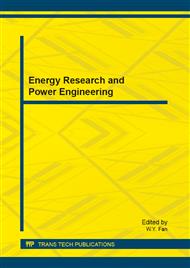p.1367
p.1374
p.1380
p.1384
p.1389
p.1393
p.1397
p.1403
p.1408
Study on the Bi-Level Optimization Model of Active Distribution Network
Abstract:
Active distribution network can realize the grid-connected operation of the large-scale intermittent power, and thus ensure the profits of the DG operators. It can also help to defer the investment for the power grid construction, reduce the standby power capacity, and improve the power supply reliability rate. Active distribution network planning should not only consider the content of the traditional distribution network planning, but also consider the influence of distributed generation output and demand side response regulation. Based on these prerequisites we establish a bi-level optimization model of active distribution network planning in this paper. From the perspective of saving investment for the electric power company, we use a function to minimize the total cost of the planning scheme, including both the plan and operation cost, with the consideration of a series of constraints such as DG and DSR. Hence we establish a bi-level optimization planning process of the active distribution network based on genetic algorithm.
Info:
Periodical:
Pages:
1389-1392
Citation:
Online since:
July 2013
Authors:
Price:
Сopyright:
© 2013 Trans Tech Publications Ltd. All Rights Reserved
Share:
Citation:


